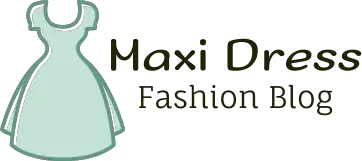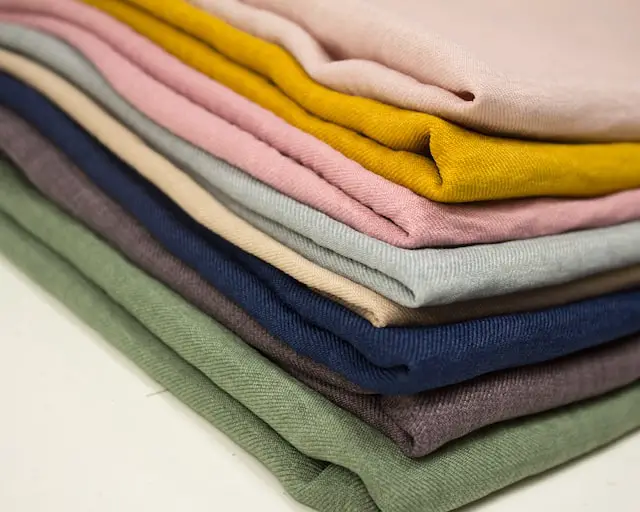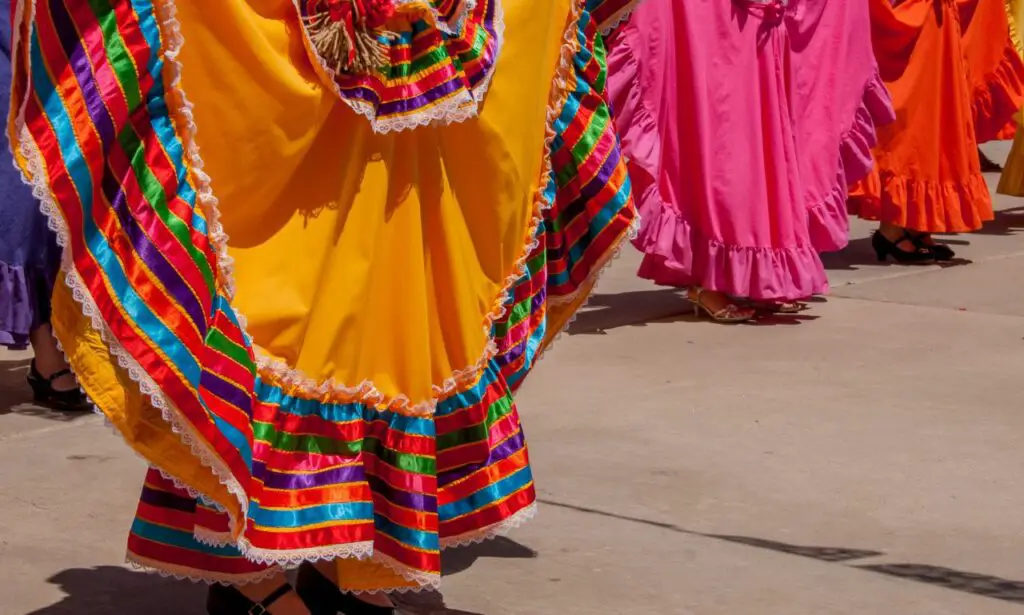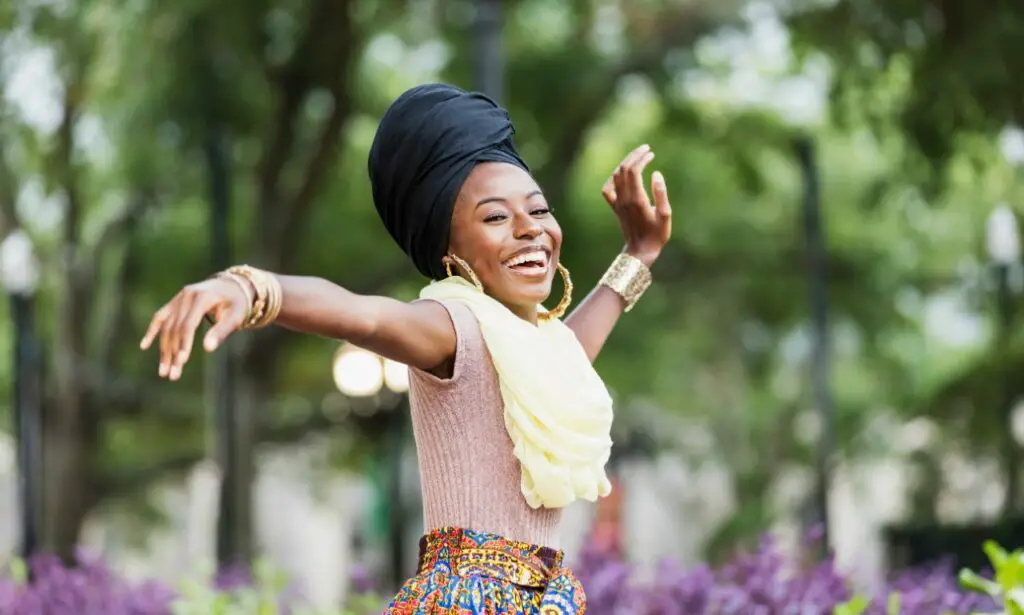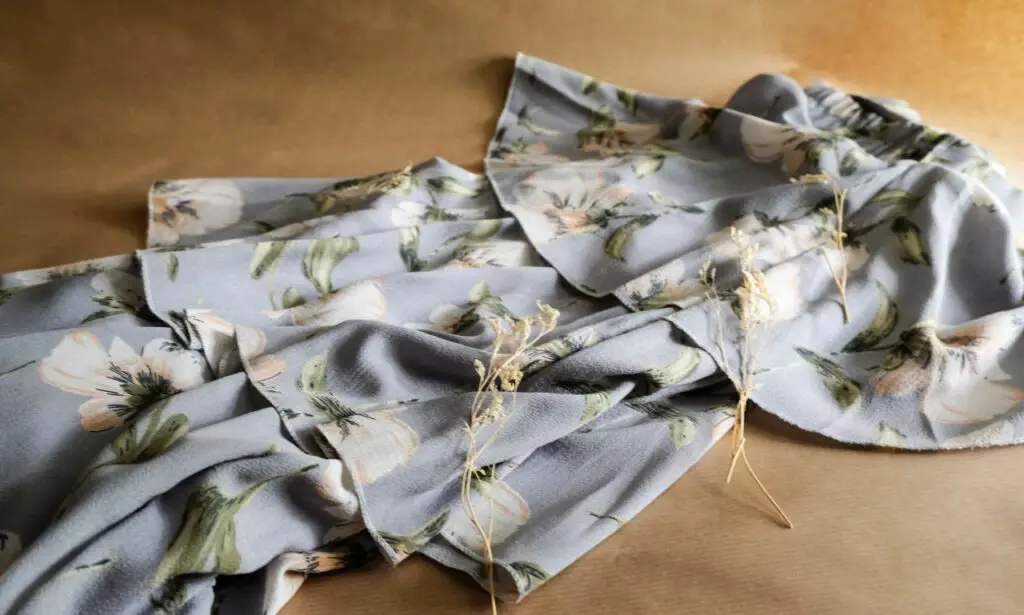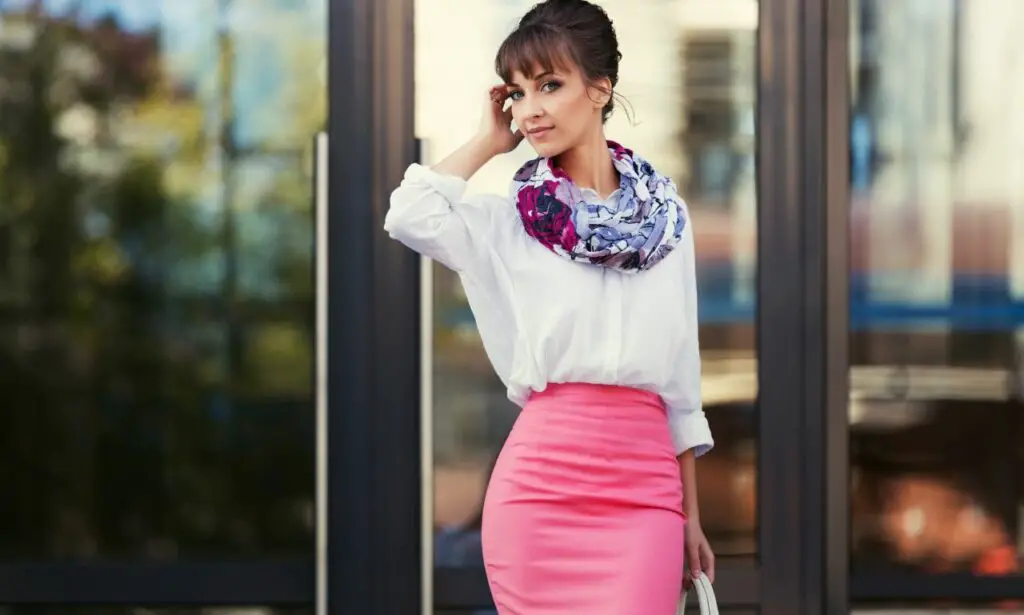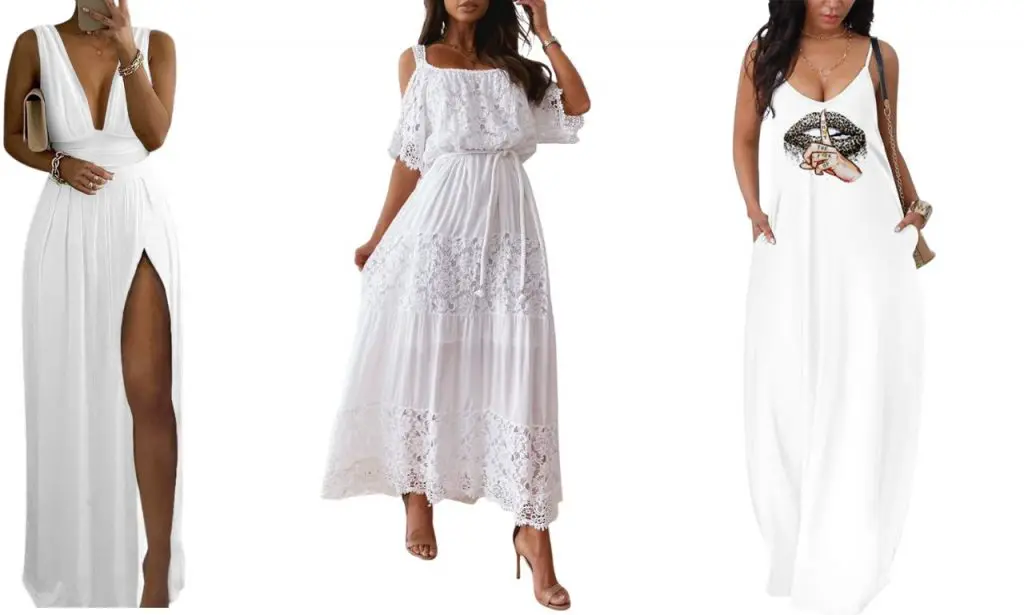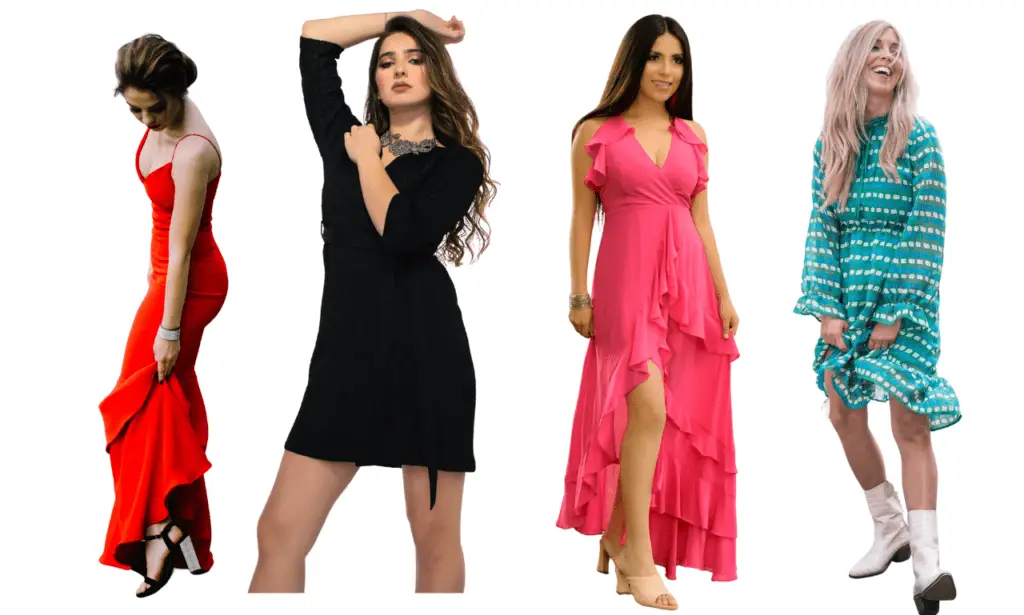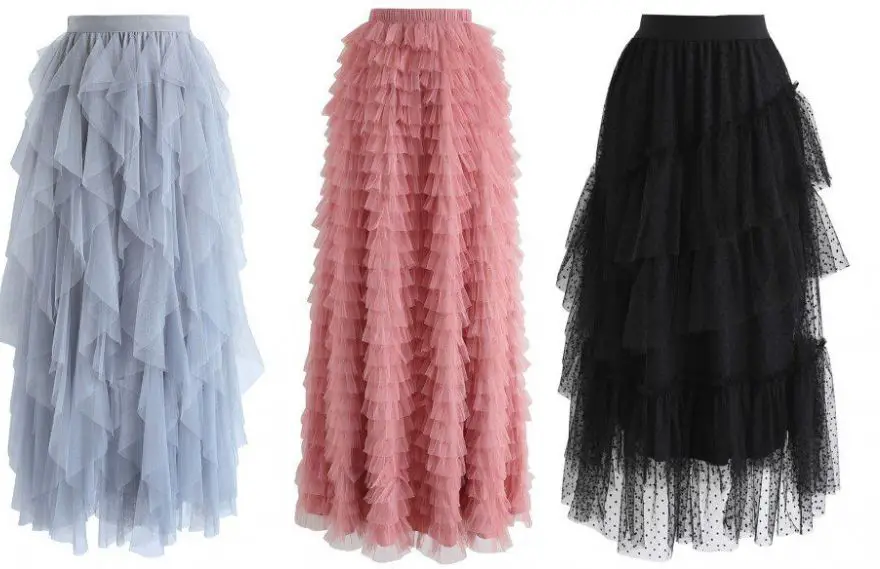Color, silhouette, design and length. These are features we look for when shopping for a maxi dress, or any dress for that matter. Seldom do we think about the fabric, though it’s the most important factor. Sure, you will hear people comment about how soft or thick the material is, but we rarely ever go deeper than that.
Today I want us to change that. After all, the fabric used determines the dresses’ comfort, softness, breathability, flexibility, and style. Moreover, certain occasions and designs call for a specific fabric. For example, cotton lawn and jersey knit fabrics are best for casual maxi dresses, while more luxurious fabrics like satin or chiffon are better for gowns.
To make this decision easier, I have curated 8 of the best fabrics for maxi dresses and their important features. Don’t get me wrong, there are many fabrics used to make dresses out there, but these 8 are the most common, and for good reasons.
But first…
What is Fabric?
Fabric is a combination of two things; fiber content and construction. The fiber, in this case, includes natural and synthetic materials like cotton, wool, polyester, and silk. To make something out of these materials, someone has to weave them, also known as construction. Sometimes you weave individual fibers, and sometimes you combine several of them to make a stronger, better fabric.
Granted, individual fibers play a huge role in how the fabric drapes, behaves in heat, and all these other qualities we want. Construction, on the other hand, determines the softness, look, breathability, strength, and durability of a fabric.
To learn more about fiber and fabric construction, watch Zoe Hong as she explains in-depth the fashion design process in this YouTube video:
When thinking about the best fabric for a dress, these are the qualities you should be looking for;
- Durability. Will it keep its shape, structure, and appearance after washing?
- Color fastness. Will it maintain its color and prints after washing?
- Weight. How thick and heavy is the fabric?
- Breathability. Will the fabric allow airflow and let sweat evaporate, or will it hold onto sweat and become stinky?
- Maintenance. Can you throw the dress in the washer/dryer, or does it require special care like hand wash or dry cleaning?
If you are in a hurry, here is a summary of the best fabrics for maxi dresses.
| Fabric | Appearance | Benefits | Cons | Care and Washing | Shrinkage Factor |
|---|---|---|---|---|---|
| Cotton lawn | Soft Lightweight Good drape | Durable Hypoallergenic Breathable | Wrinkles easily Not colorfast | Machine washable at cool to warm temperature | Cotton fabric can shrink up to 15% |
| Cotton jersey knit | Smooth Lightweight Good drape with a little structure | Durable Breathable Cool Absorbent | Not colorfast Less drape than cotton lawn Wrinkles easily | Can be washed at cool temperature and hung to dr | Shrinks up to 5% when exposed to heat |
| Rayon jersey knit | Soft, silky with a slight sheen Good drape | Breathable Durable | High maintenance Clingy wraps and fades easily | Can be machine washed, air dry on a flat surface | No shrinking |
| Polyester jersey knit | Beautiful smooth texture Lustrous or appearance Tight woven | Color Fast Wrinkle resistant Drapes well Low Maintenance wash care | Not breathable Clingy Retains odor | Easy to wash | No shrinkage |
| Cotton poplin | Soft ribbed pattern Crisp structure Light beautiful sheen | Breathable Good drape Not clingy Low maintenance | Fading is a possibility | It can be machine washed at cool temperature | Slight shrinkage in heat |
| Linen | Loose soft weave Bright undyed appearance | Breathable and highly absorbent Good drape | Wrinkles easily High maintenance | Requires special care when washing to prevent wrinkling | Slight shrinkage |
1. Cotton Lawn
Pros
- Breathable
- Soft and very drapable
- Not clingy
Cons
- Not colorfast
- Wrinkles easily
- High maintenance wash care
Cotton lawn is a smooth, soft, and lightweight fabric that looks excellent in prints. It uses a plain weave structure, meaning the cotton threads form an over/under crosshatch pattern like a basket. Because the fabric uses fine threads and a very high thread count, it turns out soft and extremely drapable, making it ideal for lightweight summer and spring maxi dresses.
On the plus side, cotton lawn is breathable, absorbent, and has a good body/crisp because it’s a natural fabric. However, it does crease quite a bit after a wash and doesn’t hold onto color permanently. While 100% cotton fabrics are very durable, they eventually warp and fade after many wash/dryer cycles. For this reason, I recommend letting the dress air dry most of the time.
2. Cotton Jersey Knit | Cotton/Spandex Knit
Pros
- Breathable
- Low Maintenance wash care
- Not clingy
Cons
- Not colorfast
- Less drape than cotton lawn
- Wrinkles easily
Knit fabrics are made on looms where you loop threads instead of weaving them. This method creates a very flexible and stretchy fabric. Though there are many types of knit fabric, jersey knit is the most commonly used on dresses, blouses, and t-shirts. It’s flat, smooth, lightweight, and drapes softly on your body.
100% cotton or cotton/spandex jersey knits are breathable, soft, and durable fabrics with a little more structure than cotton lawn. Cotton being a natural fabric, is breathable, cool, and quite absorbent, making it ideal for hot weather maxi dresses. The dress will also be lightweight though less drapery than rayon or cotton lawn.
As with any cotton fabric, it will warp and fade over time if you keep using a washer and dryer. I, therefore, recommend air drying and using mild detergent.
3. Rayon/Spandex Jersey Knit
Pros
- Breathable
- Soft and comfortable on the skin
- Drapes well
Cons
- High maintenance wash care
- Clingy
- Warps and fades
Rayon is a hybrid of synthetic and natural fiber derived from wood pulp. It is soft, silky, drapery, and has a slight sheen making it comfortable. The fabric is also quite breathable, so it’s great for warm weather.
On the downside, rayon or rayon/spandex jersey knits have low abrasion resistance and contain some static. This makes the dress clingy, especially when it’s stretched, so it’s best for flowy maxi dresses.
The fabrics also have low color fastness and will warp, peel and fade dramatically the more you put them in the dryer. Because of the high flexibility and wrinkling, I recommend laying the dress on a flat surface to dry instead of hanging or using a dryer. Dry cleaning is best if you can afford it.
4. Polyester and Polyester ITY Jersey Knit
Pros
- Color Fast
- Wrinkle resistant
- Drapes well
- Low Maintenance wash care
- Retains shape
Cons
- Not Breathable
- Absorbs odor
- Clingy
Polyester is the most used fabric for clothing globally. It is a synthetic material made from highly processed petroleum by-products, and it is cheaper to manufacture than natural fabrics. Polyester is quite versatile, and you will find it in many fabric variations, from sheers to velvet to plain weave.
The ITY in Polyester/spandex ITY jersey knit means interlocking twist yarn, referring to how the yarns are twisted first before being knit into jersey fabric. This makes the material smooth and stable.
This fabric has plenty of advantages as a maxi dress material. First, it has a beautiful smooth texture and plenty of stable stretch, especially when blended with spandex. The fabric also has a high absorption rate, so it retains color and prints well. This makes it ideal for flowy maxi dresses with bold, bright prints or beautiful solid colors.
It is colorfast, wrinkle resistant, and has quite a gorgeous drape with a lustrous or matte appearance. These qualities mean polyester and polyester ITY jersey knits are low maintenance, and you can throw them in the wash and use a dryer.
On the other hand, polyester fabrics are not so breathable. The fabric retains sweat and odor the same way it retains color. It will be quite uncomfortable (and smelly) to wear in hot weather, so I advise you save polyester dresses for the fall season.
Why fall and not winter? Because the fabric is also not thick or warm enough for the winter cold. It is still a very lightweight material, only less breathable.
5. Cotton Poplin
Pros
- Breathable
- Good drape
- Not clingy
- Low maintenance
Cons
- Shrinkage and fading are a possibility if exposed to heat or direct sunlight.
Poplin is a unique fabric with limited disadvantages, if any. It features a plain weave structure with large weft yarns and fine weft yarns. This creates a ribbed pattern, though you can’t feel it with a simple touch. While the fabric was originally made of cotton, today you will find poplin in several materials, including polyester, silk, wool, or a blend of two or three fabrics.
Most maxi dresses are made of cotton/polyester poplin to get the advantages of both fabrics. It is super breathable, absorbent, and allows moisture to evaporate. The drape of the fabric also keeps a distance between the skin and the dress, creating a buffer against heat. All these make poplin the perfect material for summer maxi dresses.
The main difference between cotton poplin and cotton lawn is that the former has a crisp, almost starched feel which helps it maintain a certain flair and structure. This makes it ideal for dresses that require crisp details like pleats, gathers, and collar. It’s also easy to iron if you want to maintain those pleats. Poplin has a light, beautiful sheen which makes a pleated maxi quite exquisite.
6. Linen
Pros
- Breathable and highly absorbent
- Good drape
- Gets softer with time
Cons
- Wrinkles easily
- High maintenance
Linen is an all-natural fabric from flax plants. It has a loose soft weave and is often used undyed. The fabric is breathable, highly absorbent, and soft on your skin. You will find it mostly on casual maxi dresses made for hot weather because of its breathable, lightweight nature.
The downside of linen fabric is that it wrinkles easily and requires special care when washing and drying. Thankfully, it has a stable drape, so you can hang it dry. Interestingly, the fabric gets softer with time and it is quite durable.
7. Tencel Cotton Satin
Pros
- Breathable and absorbent
- Hypoallergenic
- Silky soft luster
- Tough, durable fabric
Cons
- Requires special care when washing
- Satin dresses are expensive
To most people, satin is a shiny, luxurious material found in evening gowns and luxury dresses. However, satin is actually a type of weave, like the jersey knit weave, and not a fabric. The satin weave is a thread structure where four weft threads cross over one warp thread, creating a soft, shiny top surface and a rough inner surface.
To be clear, satin and sateen are the same thing, at least for the most part. If the fabric is made of 100% cotton, it is sateen. Other materials like silk, polyester, and wool made using the same weaving structure are satin. For the best quality maxi dress, we chose Tencel cotton satin because it has all the good qualities of cotton and it’s cheaper.
This fabric is lightweight, breathable, soft and drapes really well over your body. Cotton satin is also very durable thanks to its unique weave, and it’s easier to take care of because you can wash it at home. And because it’s made of cotton, you can expect some wrinkling and shrinkage if you put the dress in a dryer.
8. Chiffon/Georgette
Pros
- Light, breathable fabric
- Good resistance to wear
- Elegant and feminine
- Good drape
Cons
- Sagging is a possibility
- High maintenance
My all-time favorite maxi dress is made of chiffon. This name comes from the French word Chiffe which means light, thin and transparent. The fabric is also known as georgette or crepe.
Chiffon is a silk fabric woven with a strong twist crepe warp and weft. It is a complicated process that eventually leads to a light, thin, transparent fabric with a feminine, luxurious feel. The fabric has this cute uniform wrinkles and a loose structure, making it drape elegantly on your body. It’s also colorfast and holds onto color and print quite well.
Due to its light, breathable nature, chiffon maxi dresses are better for warm spring or summer climates. Unfortunately, its loose structure makes the fabric susceptible to sagging and deforming if not taken care of. It’s, therefore, best to handwash it or clean with cold water and then lay it flat instead of hanging. Also, I prefer folding chiffon clothes instead of hanging them in the closet.
How to Check the Fabric Quality
There really is no straightforward way to check the quality of a fabric. In most cases, you can only touch, pull the fabric slightly and also check the thread count. Most fabrics also have a care label, like dresses, so you can read it before buying.
If you are buying a ready-made maxi dress, however, the only and best way to know this information is to check the care label on the dress. It will have the information on fabric and how to take care of that dress, so it lasts long.
Hopefully, this information has shone some light on possible fabrics you will find on your maxi dresses and how to treat them.
